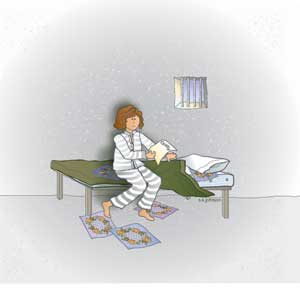
Tabberone is pronounced tab ber won
not tay ber own

|
Tabberone is pronounced tab ber won |
|
|
The Tabberone™ Archives These articles concern what we consider major trademark and copyright issues. They are usually reproduced with the original source referenced. Bear in mind, these articles are copyrighted and commercial use without permission of the authors may be considered infringement. The intended use here is educational, commentary and non-commercial. The reason they are reproduced in the Tabberone™ Archives, as opposed to just providing a link, is because links disappear and pages are removed. That presents a messy confirmation process that is annoying to the browser (you) but also presents a credibility issue. We do not claim any rights in these pieces. Do not regard the absence of a copyright statement or © to mean the article is not copyrighted. Some sites do not have a copyright statement. When an article or a comment is posted on the internet by the copyright owner, the owner is seeking a world-wide, 24/7 audience; sometimes for a limited amount of time, sometimes indefinitely. In essence, an internet posting intentionally relinquishes one's copyright for exclusivity because the owner has posted it on the internet to been seen by everyone, everywhere. The Tabberone™ Archives non-commercial duplication of the posting is simply a continuance of the original wishes of the copyright owner. We post these articles for reference, for commentary and for confirmarion of our position. |
|
Source: McCall's Quilting Magazine Sept/Oct 2010 Issue, pages 54 - 55. August 18, 2010 - Content has not been altered except to add numbers to the paragrapd (in red) for reference. This article has been re-formatted from the magazine multi-columns format into a single column format. |
|
Know Your Rights (and Wrongs)
¶ 1 |
|
¶ 2 As quilters, we can be inspired by a beautiful painting, a special photograph, or a quilt we see in a magazine. We want to make a quilt that looks just like that, or a variation of it. May we? It depends. Copyright law is an integral part of the quilt world. Understand the rule of law, and its application, can help us avoid embarrassing situations.
¶ 3 |

|
|
¶ 4
¶ 5
¶ 6
¶ 7
¶ 8
¶ 9 Q: Can I enter a quilt I made from a McCall's Quilting (or other magazine) pattern in a quilt show?
¶ 10 Q: Can I sell a quilt made from a magazine pattern?
¶ 11 Q: Can I teach a class using a quilt pattern that was featured in a magazine?
¶ 12 Q: Can I copy a magazine quilt pattern to share with my friends?
¶ 13 Q: If we're making our guild raffle quilt from a magazine quilt pattern, can I photocopy the pattern for our quilt members?
¶ 14 Q: Do all of these answers apply to patterns and quilts seen on a website?
¶ 15 Q: What steps should I take if I see a copyright infringement at a quilt show?
¶ 16
¶ 17
¶ 18 Article is Copyright © 2010 New York Track Media |


|
General Articles | Cease and Desist Letters | Federal Court Cases | FAQs & Whines | Glossary | Hall Of Shame | Contributions
Corporate Lawyers |
|
Definitions |
|
Federal Court Cases Alphabetically | by Federal Circuit | by Subject | by Court Quotations |
|
Federal Statutes Copyright Act 17 U.S.C. 5 | Digital Millenium Copyright Act 17 U.S.C. 12 | Lanham Act 15 U.S.C. 22
|